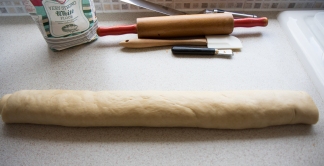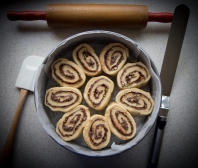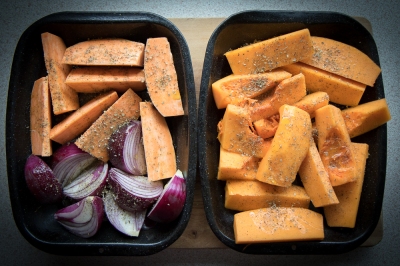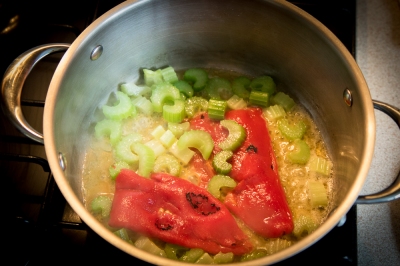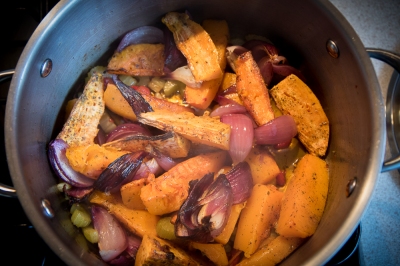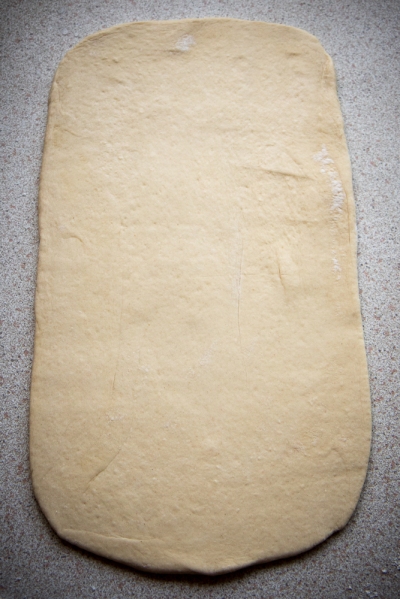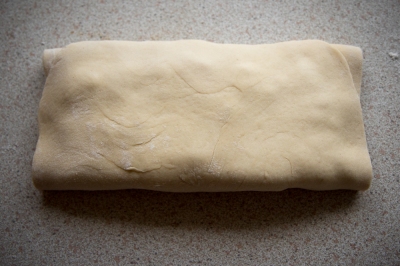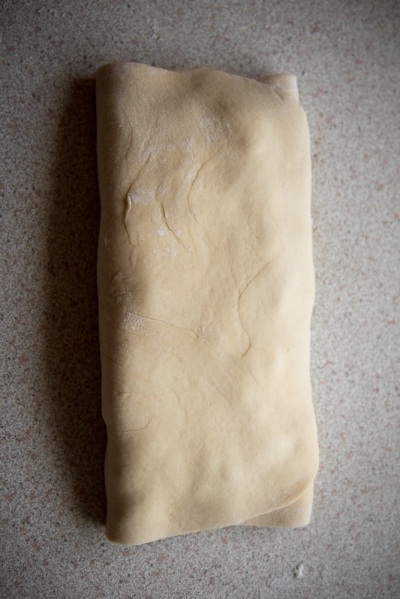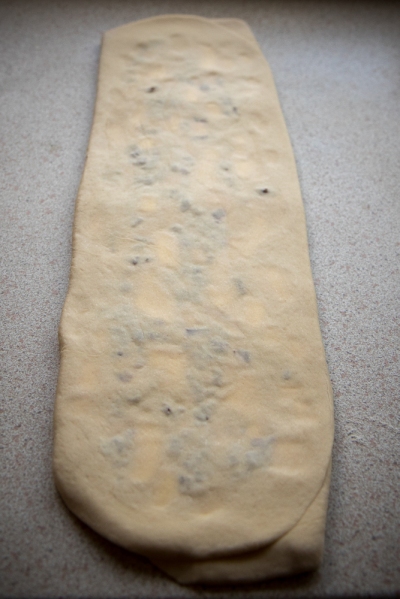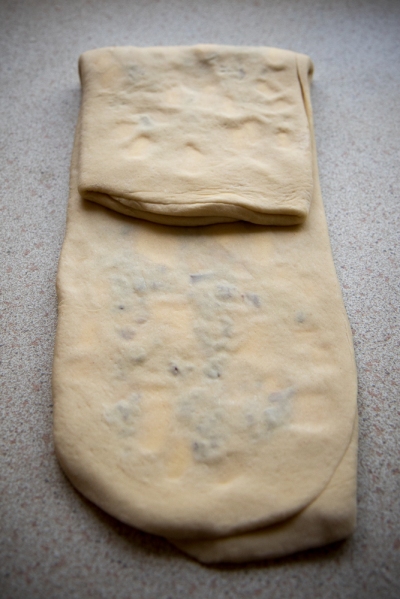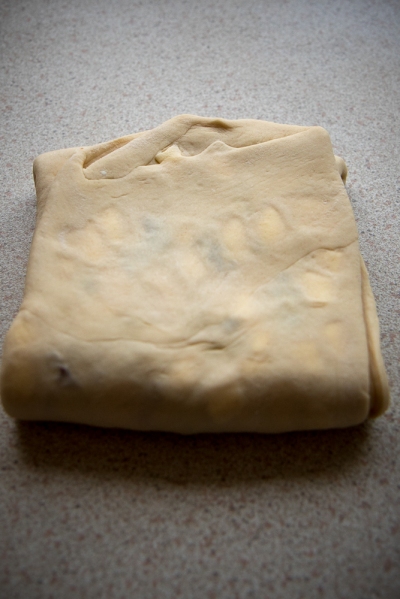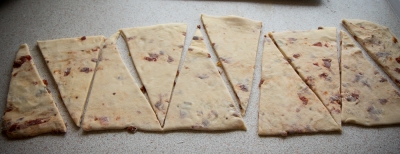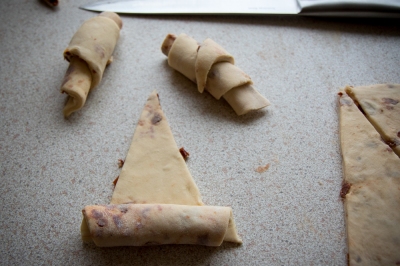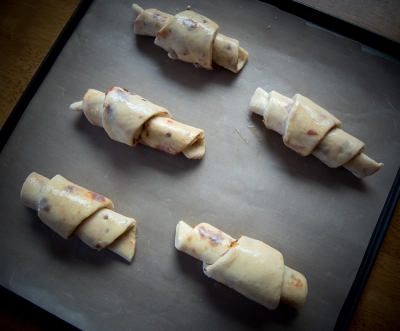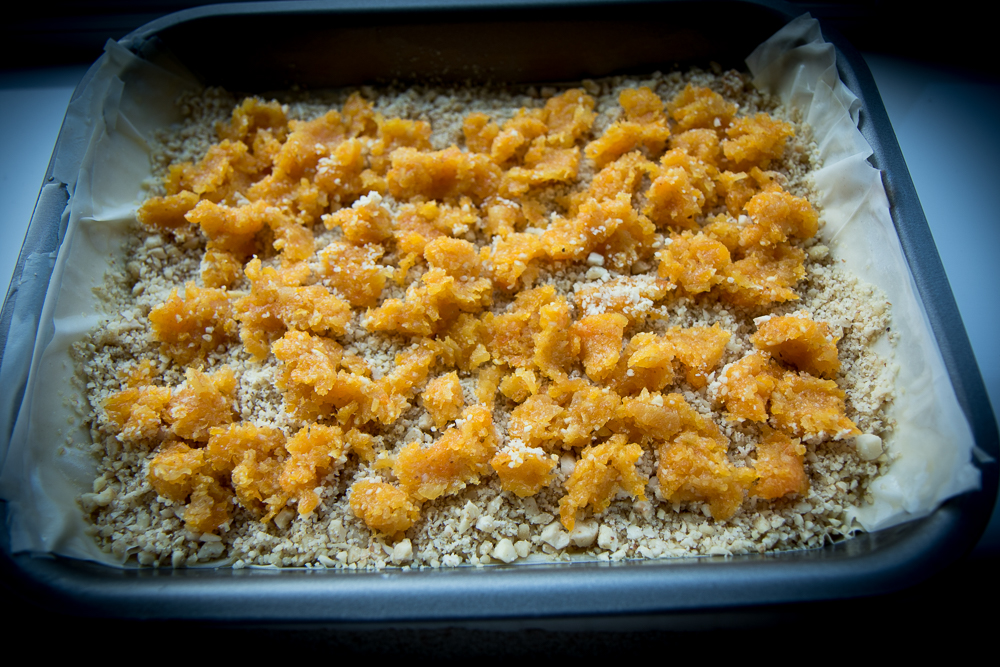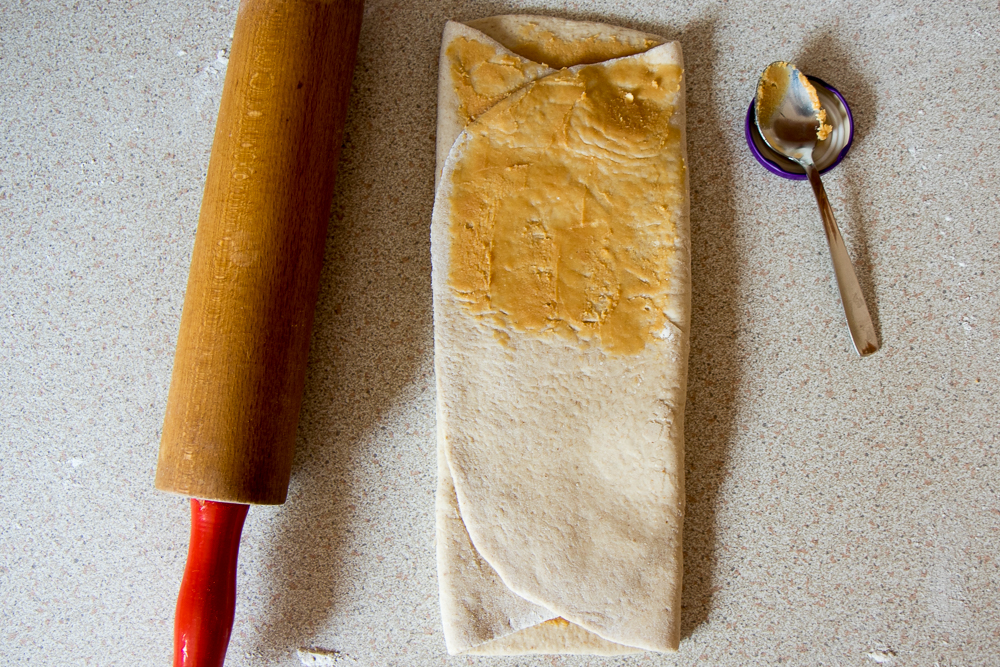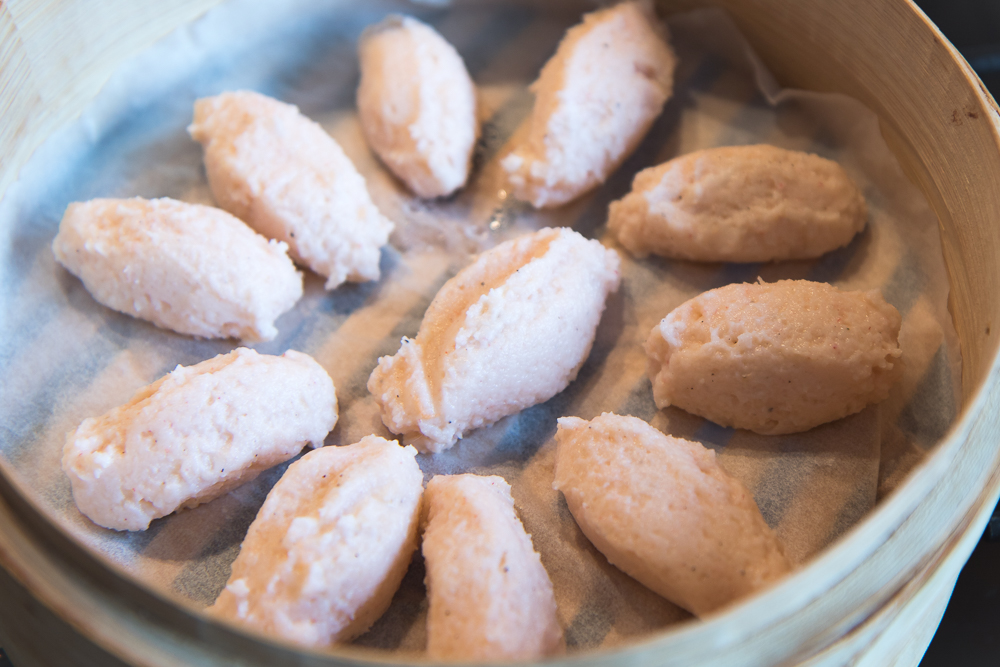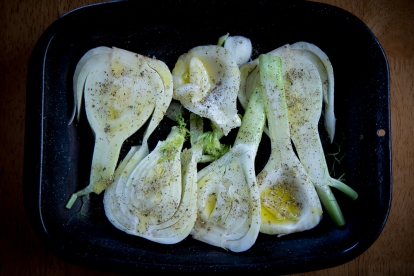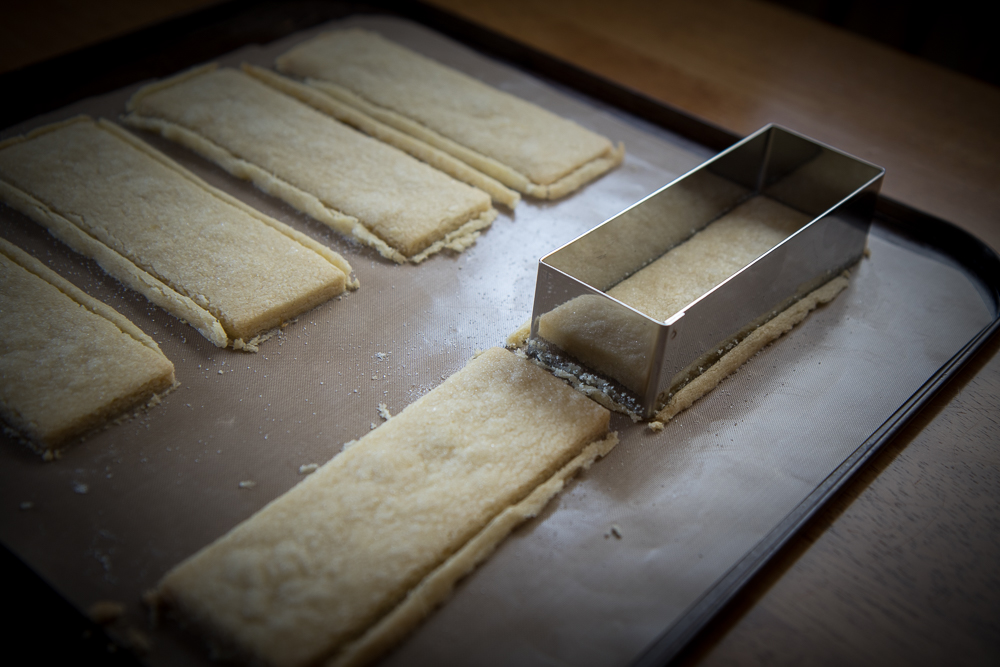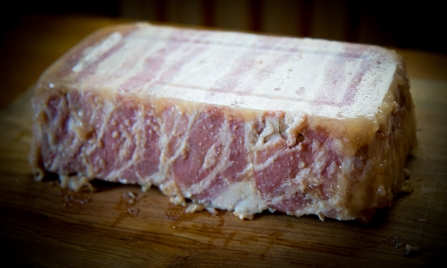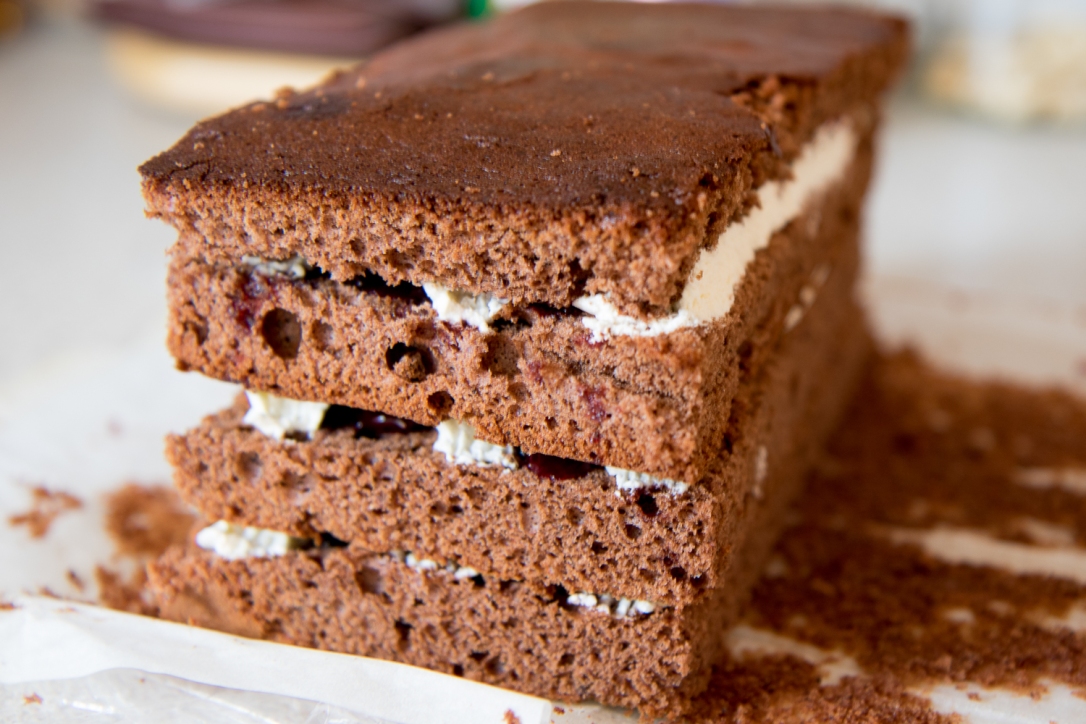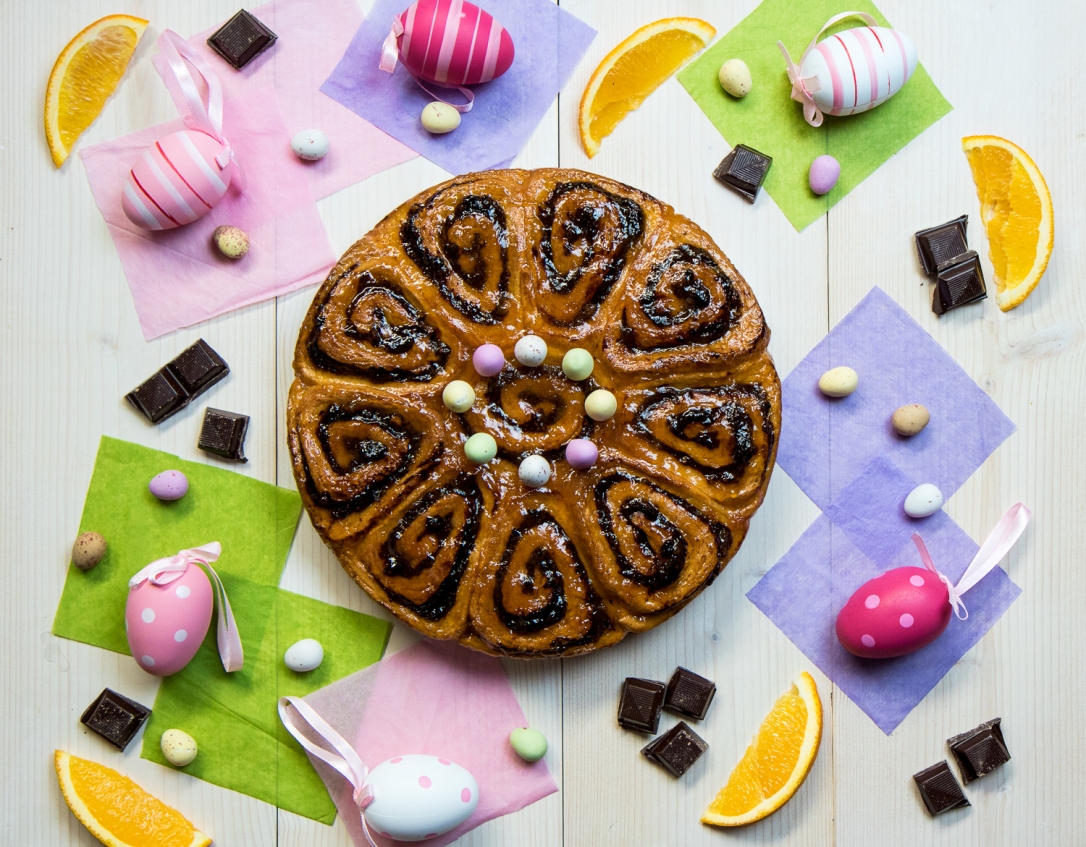
A sweet treat for Easter – or any occasion really.
This recipe is my own and, with a method similar to baking a Stollen, is very easy to make. It uses a simple fortified dough (containing eggs and butter) and takes little kneading. Give it a go.
Ingredients:
For the dough:
10″ or 25.5cm non-stick baking tin – greased and lined with parchment paper.
600g Strong Flour – plus some for kneading.
150ml warm milk – blood temperature.
200g unsalted butter – must be unsalted.
1 whole egg and 1 egg yolk.
2 tsps salt.
2 tabls caster sugar.
25g dried active yeast or 50g fresh yeast.
1 tsp vanilla extract.
Butter for greasing.
Filling:
180g Chocolate spread.
55g crushed Pistachio nuts.
Zest from 3 large oranges.
Glaze:
1/4 jar of Apricot jam.
Decoration:
1 packet of mini eggs.
Method:
In a large bowl stir 50g of butter into the warm milk.
When the butter has melted into the milk add the yeast, sugar and 2 heaped tablespoons of flour – taken from the 600g of flour that you have already weighed.
Tip: To remove any lumps of flour from the ferment – lightly whisk with a hand whisk.
Leave the milk and yeast mixture to ferment for 30-40 minutes. The mixture will bubble and quadruple in size.
In a second large bowl combine the flour, sugar and salt and rub in the remaining 150g of butter, until all the butter has dispersed into the flour. Make a well in the centre.
In a separate bowl lightly whisk, with a fork, the egg, egg yolk and vanilla.
When the ferment is ready add, with the eggs and vanilla, to the flour and butter mix.
Combine all the ingredients into a dough. Knead on a floured surface for 5 minutes.
Once kneaded, put the dough into a floured bowl, cover with cling film and leave to prove in a warm place until doubled in size.
Note: The first prove can take 2 hours.
Note: Unsalted butter is essential for the ferment, as salt will prevent yeast from activating.
Note: If you think that the dough is a little dry, add a touch more warm milk. If it’s to wet/sticky add a touch more flour.
Rolling the dough:
Once the dough has proved, roll out, on a lightly floured surface, into an oblong shape, approx’ 18″ x 13″ or 46cm x 33cm (see image 1 – below) and 1/4″ or 6mm in thickness.
Once rolled out to the required size, cover with chocolate spread and sprinkle with crushed pistachio nuts and the zest of the oranges. (see image 2 – below)
Roll up the dough into a sausage shape. Once rolled continue to roll the dough back and forth lightly stretching the length to approx’ 21″ or 53cm. (See image 3 below.)
Once rolled to the desired length, trim 1/2″ or 1cm off each end.
Now, with a sharp knife, cut the dough into even pieces – approx’ 1 and a 1/4″ or 3.5cm in length.
Arrange the cut pieces of dough in a greased and lined baking tin. (see image 4 – below)
Cover with cling film and leave to prove in a warm place for 2 hours.
Once proved bake in a preheated oven on Gas 6 or 190°C / 375°F for 30-35 minutes.
Note: Don’t cram the baking tin with cut dough pieces – leave room for the dough to expand while proving. Any pieces that won’t fit in the tin just bake as separate buns and have with a cuppa’.
Glazing:
When Easter Bread is baked, remove from the oven.
Gently heat 4 tablespoons of Apricot jam in a pan until melted and liquid.
Remove the, warm, baked Easter Bread from the baking tin place on a wire rack.
Spoon the melted apricot jam over the warm bread, and using a pastry brush, make sure that the top and sides are covered with the apricot glaze.
Leave to cool, then store in an airtight container.
Decorate with mini eggs, if you so wish. Enjoy.
Image 1. Image 2.
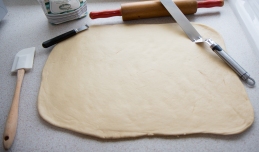
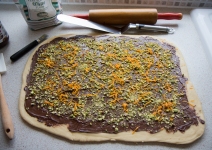
Image 3. Image 4.
